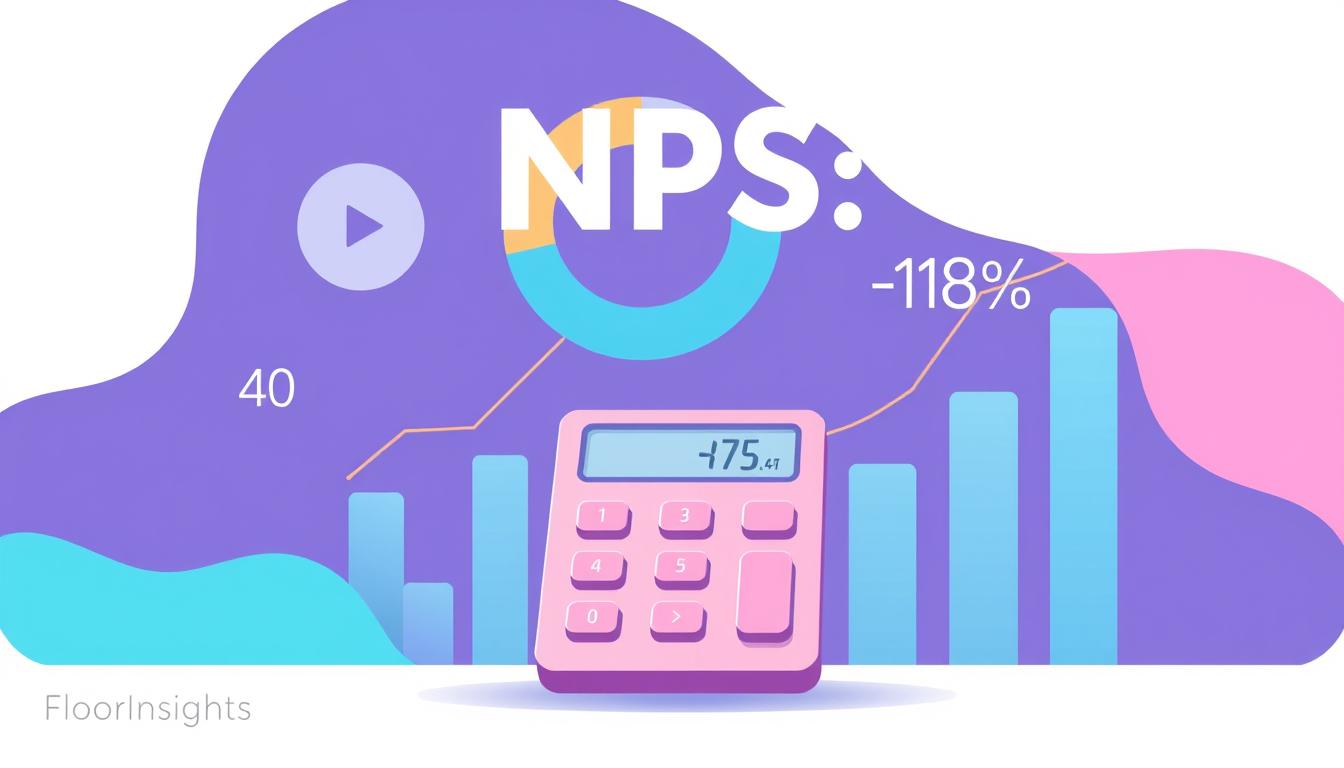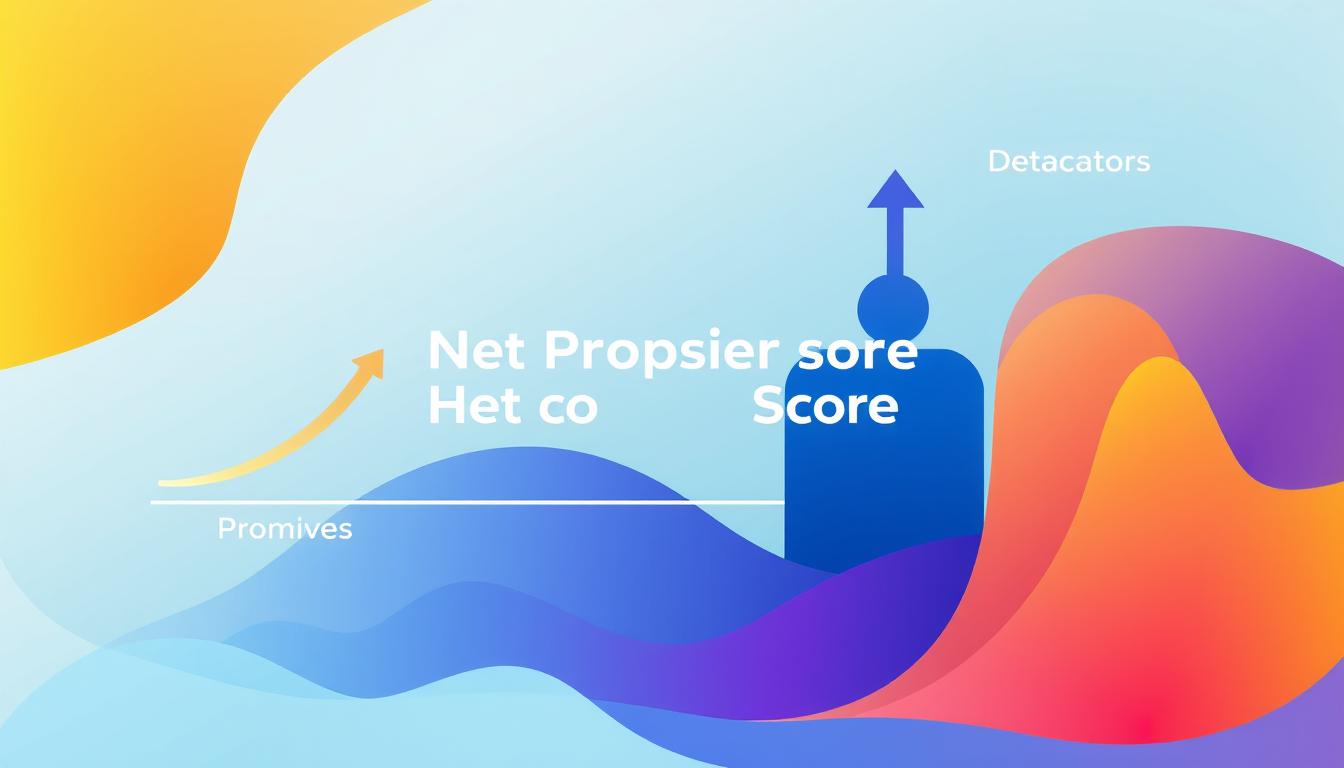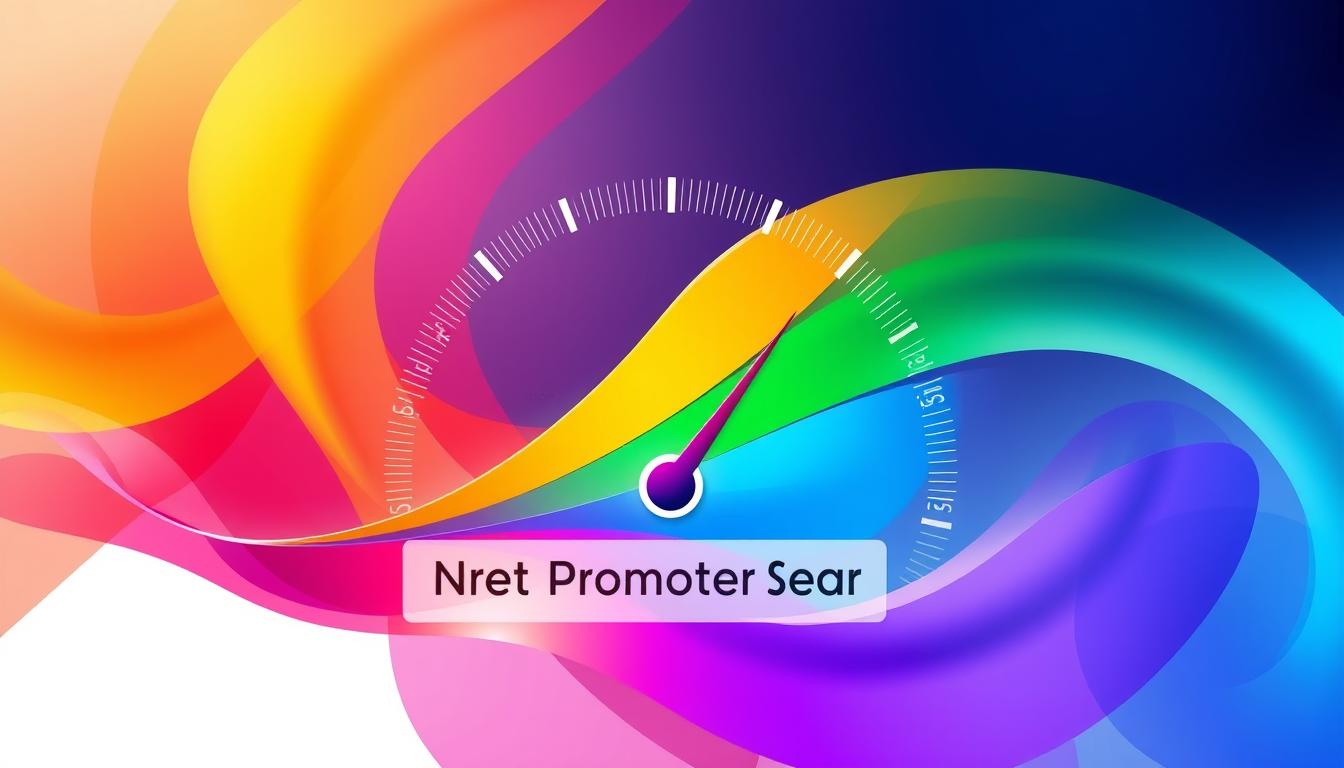In today’s competitive landscape, understanding and tracking the Net Promoter Score (NPS) has become a critical metric for businesses seeking to enhance customer satisfaction, loyalty, and overall performance. NPS provides valuable insights into how customers perceive your brand, services, and products, allowing you to identify areas for improvement and drive long-term growth. By measuring NPS over time, we can uncover meaningful trends, patterns, and seasonal fluctuations that can inform strategic decision-making and optimize the customer experience.
Key Takeaways
- Measuring NPS over time is essential for understanding customer sentiment and loyalty trends.
- Analyzing NPS data can reveal patterns and seasonality that impact customer feedback.
- Continuous NPS monitoring enables businesses to make data-driven decisions and improve the customer experience.
- The link between NPS and customer retention underscores the importance of nurturing promoters and addressing detractors.
- Benchmarking NPS against industry peers can provide valuable competitive insights.
Understanding the Net Promoter Score
The Net Promoter Score (NPS) is a widely-used metric that measures customer loyalty and advocacy. It’s a simple yet powerful tool that provides valuable insights into the customer experience and helps businesses identify areas for improvement. By understanding the Net Promoter Score, companies can make data-driven decisions to enhance their customer relationships and drive long-term growth.
What is the Net Promoter Score?
The Net Promoter Score is calculated based on a single question: “How likely are you to recommend our company/product/service to a friend or colleague?” Customers respond on a scale of 0 to 10, with 0 being “Not at all likely” and 10 being “Extremely likely.” Respondents are then categorized into three groups:
- Promoters (score 9-10): Loyal, enthusiastic customers who are likely to refer others and contribute to positive word-of-mouth.
- Passives (score 7-8): Satisfied but unenthusiastic customers who are susceptible to competitors’ offers.
- Detractors (score 0-6): Unhappy customers who are unlikely to recommend the company and may share negative feedback.
The Net Promoter Score is calculated by subtracting the percentage of Detractors from the percentage of Promoters. The result is a score ranging from -100 to +100, with a higher score indicating a more loyal and engaged customer base.
The Importance of NPS in Customer Experience
The Net Promoter Score is a vital metric for understanding the customer experience and driving improvements. By monitoring NPS over time, businesses can identify trends, spot areas of concern, and take action to address customer pain points. A high NPS indicates that customers are satisfied, loyal, and likely to become advocates for the brand, while a low NPS suggests that there are opportunities to enhance the customer journey and build stronger relationships.
Ultimately, the Net Promoter Score is a powerful tool for measuring customer sentiment and using that data to inform strategic decisions that improve the overall customer experience. By continuously tracking and analyzing NPS, companies can unlock valuable insights and drive sustainable growth.
Tracking NPS Over Time
Monitoring the Net Promoter Score (NPS) over time is crucial for understanding customer sentiment and driving long-term improvements. By consistently measuring and analyzing NPS, businesses can identify trends, patterns, and seasonal fluctuations that provide valuable insights into the customer experience.
To effectively track NPS over time, it’s important to establish a consistent survey cadence and data collection methodology. This ensures that the data is comparable and provides a reliable baseline for analysis. Experts recommend conducting NPS surveys at regular intervals, such as quarterly or annual cycles, to capture changes in customer feedback and relationships.
When collecting NPS data, it’s essential to employ standardized survey metrics and maintain a centralized repository of responses. This allows for comprehensive analysis and identification of trends, enabling businesses to make informed decisions and take targeted actions to improve the customer experience.
Consistent, reliable NPS data is the foundation for understanding and improving the customer experience over time.
By tracking NPS over time, organizations can detect shifts in customer sentiment, pinpoint areas for improvement, and measure the impact of their customer experience initiatives. This data-driven approach empowers businesses to make strategic decisions, foster stronger customer relationships, and cultivate a loyal customer base.
Identifying Trends and Patterns
Analyzing the Net Promoter Score (NPS) over time is crucial for understanding your customer experience and driving business performance. By identifying trends and patterns in NPS data, we can uncover valuable insights that inform strategic decision-making.
Analyzing NPS Trends by Customer Segment
To gain a deeper understanding of NPS, it’s essential to examine the data across different customer segments. This can reveal nuanced insights that a broad, aggregated view may miss. By segmenting customers based on factors such as demographics, purchase behavior, or product usage, we can identify areas where the customer experience may be excelling or faltering.
Correlating NPS with Other Metrics
The true power of NPS lies in its ability to provide a holistic view of the customer experience. By correlating NPS with other key business metrics, such as customer retention, revenue, and employee satisfaction, we can uncover the underlying drivers of customer loyalty and organizational performance. This cross-functional analysis enables us to make informed decisions that optimize the customer experience and drive sustainable growth.
Through a data-driven approach to NPS analysis, we can uncover the trends and patterns that shape the customer journey. By leveraging this insight, businesses can make strategic adjustments, address pain points, and foster stronger, more valuable relationships with their customers.
Seasonality and NPS Fluctuations
Analyzing the Net Promoter Score (NPS) over time reveals an interesting pattern – the score can fluctuate significantly due to the impact of seasonality. Factors such as holidays, product launches, and industry-specific events can all influence customer feedback and NPS scores. Understanding these seasonal variations is crucial for accurately interpreting NPS data and making informed decisions about customer experience improvements.
One common example of seasonal fluctuations is the impact of major holidays. During the holiday season, customers may be more inclined to provide positive feedback, leading to a temporary spike in NPS. Conversely, post-holiday periods can sometimes see a dip in NPS as customers return to their regular routine and expectations. Similarly, product launches or marketing campaigns can temporarily boost NPS, only to see it settle back to a more consistent level over time.
By analyzing NPS trends across different seasons and industry events, businesses can gain valuable insights into their customers’ experiences. This knowledge can inform strategic decisions, such as when to allocate resources for customer feedback collection, or how to adjust service levels to meet fluctuating demands.
Seasonality is a critical factor to consider when interpreting NPS data. Failing to account for these natural ebbs and flows can lead to misguided conclusions and suboptimal business decisions.”
Ultimately, understanding the impact of seasonality on NPS is a crucial step in leveraging this powerful metric to drive continuous customer experience improvements. By staying attuned to these fluctuations, organizations can make more informed choices and better serve their customers throughout the year.

Best Practices for Continuous NPS Measurement
Maintaining a consistent and effective Net Promoter Score (NPS) measurement program is crucial for businesses seeking to drive continuous improvement in their customer experience. By adhering to best practices, organizations can gain valuable insights and leverage NPS data to make informed decisions that enhance customer loyalty and advocacy.
Frequency and Timing of NPS Surveys
The optimal frequency and timing of NPS surveys can vary depending on the industry, customer touchpoints, and organizational goals. However, a general best practice is to conduct NPS surveys at regular intervals, such as quarterly or semi-annually. This allows businesses to track trends, identify patterns, and respond to changes in customer sentiment in a timely manner.
It’s also important to consider the timing of NPS surveys, ensuring they align with critical customer touchpoints or events. For instance, conducting surveys immediately after a purchase, product usage, or service interaction can provide more relevant and actionable feedback.
| Frequency | Timing |
|---|---|
| Quarterly | Post-purchase, product usage, or service interaction |
| Semi-annually | Periodic, aligned with customer lifecycle events |
| Annually | Comprehensive review of customer experience |
By adopting a structured approach to NPS survey frequency and timing, businesses can ensure the continuous collection of customer feedback, enabling data-driven decision-making and the implementation of targeted improvements.
Consistent and timely NPS measurement is the foundation for driving meaningful customer experience improvements.
Net Promoter Score and Customer Loyalty
The Net Promoter Score (NPS) is not just a metric, but a powerful indicator of customer loyalty and advocacy. Studies have consistently shown a strong correlation between a high NPS and long-term customer retention. Businesses that excel at cultivating a loyal customer base often have an equally impressive NPS.
The Link Between NPS and Customer Retention
Customers with a high affinity for a brand, as reflected in a strong NPS, are more likely to continue doing business with that company. They become ardent advocates, actively promoting the brand to their peers and providing valuable word-of-mouth marketing. In contrast, detractors who provide low NPS scores are more inclined to churn, highlighting the importance of addressing their concerns and turning them into loyal supporters.
By tracking NPS over time and analyzing trends, businesses can gain valuable insights into the health of their customer relationships. A steadily increasing NPS is a clear sign that customer loyalty is on the rise, while a declining score may indicate emerging issues that need to be addressed promptly.
| Metric | Correlation with Customer Loyalty |
|---|---|
| Net Promoter Score (NPS) | Strong positive correlation |
| Customer Satisfaction (CSAT) | Moderate positive correlation |
| Customer Effort Score (CES) | Moderate negative correlation |
As the table above illustrates, the Net Promoter Score has the strongest link to customer loyalty, outperforming other customer experience metrics like Customer Satisfaction (CSAT) and Customer Effort Score (CES). By prioritizing NPS, businesses can focus their efforts on nurturing long-term, mutually beneficial relationships with their customers.
In conclusion, the Net Promoter Score is a reliable indicator of customer loyalty and advocacy. By closely monitoring NPS trends and addressing the needs of detractors, companies can foster a loyal customer base that drives sustainable growth and profitability.
Using NPS Data to Drive Improvements
At the heart of leveraging the Net Promoter Score (NPS) is the ability to use the insights gleaned from customer feedback to drive meaningful improvements in the customer experience. By closing the feedback loop and addressing the concerns of detractors while promoting the advocacy of promoters, organizations can enhance overall customer satisfaction and retention.
Closing the Feedback Loop
Responding promptly to customer comments, whether positive or negative, is essential. By acknowledging customer input and demonstrating a genuine commitment to addressing their concerns, companies can build stronger customer relationships and foster a culture of continuous improvement.
Addressing Detractors and Promoting Promoters
Detractors, those who provide a low NPS score, represent an opportunity for organizations to identify and resolve pain points in the customer experience. By actively engaging with detractors, companies can uncover valuable insights and work to address the root causes of customer dissatisfaction.
On the flip side, promoters, those who provide a high NPS score, are the advocates that organizations should nurture and amplify. By recognizing and rewarding promoters, companies can encourage them to share their positive experiences, thereby fostering word-of-mouth marketing and enhancing customer retention.
By closing the feedback loop and strategically addressing detractors and promoting promoters, organizations can harness the power of NPS data to drive continuous improvements in the customer experience. This holistic approach to leveraging NPS ultimately leads to stronger customer relationships, increased loyalty, and sustainable business growth.
Benchmarking and Competitive Analysis
Measuring your Net Promoter Score (NPS) is a crucial step in understanding your customer experience, but the true value lies in putting it into context. Benchmarking your NPS against industry standards and competitors can provide invaluable insights to drive your business forward.
By analyzing your NPS in relation to your peers, you gain a clearer picture of your competitive landscape. This allows you to identify areas where you excel and opportunities for improvement. Are your customers more loyal and engaged compared to your industry average? Or is there room for your customer experience strategies to evolve and better meet their needs?
Competitive analysis is a powerful tool in this process. Tracking the NPS of your top competitors can reveal their strengths and weaknesses, guiding you on how to differentiate your brand and enhance your customer experience. Are there specific product features or services that make your competitors stand out? Leveraging this data can help you capitalize on your own unique value proposition.
Remember, the Net Promoter Score is not just a metric – it’s a window into your customer’s mindset. By benchmarking your performance and analyzing your competitive landscape, you unlock the insights needed to make strategic, data-driven decisions that elevate your customer experience and drive business performance.
Measuring your NPS against industry standards and competitors is essential for gaining a competitive edge.
The Role of NPS in Customer Advocacy
As we have explored, the Net Promoter Score (NPS) is a powerful metric that provides valuable insights into customer loyalty and satisfaction. But the impact of NPS extends beyond just these measures – it is a crucial driver of customer advocacy, a phenomenon that can have a transformative effect on a business’s growth and longevity.
When customers have a positive experience with a brand and are willing to recommend it to others, they become powerful advocates. These promoters not only provide positive word-of-mouth that attracts new customers, but they also demonstrate a deeper level of engagement and loyalty. They are more likely to remain with the brand, increase their spending, and provide valuable feedback that can help the company enhance its products and services.
By closely monitoring NPS and understanding the factors that drive it, businesses can take targeted actions to nurture and amplify this customer advocacy. This may involve addressing the concerns of detractors, improving the customer experience, and empowering promoters to share their positive experiences with their networks. Ultimately, a high NPS can become a self-fulfilling prophecy, as a growing base of advocates reinforces the brand’s reputation and drives sustainable business growth.
FAQ
What is the Net Promoter Score?
The Net Promoter Score (NPS) is a customer loyalty metric that measures the willingness of customers to recommend a company’s products or services to others. It is calculated based on the responses to a single question: “How likely are you to recommend [company/product/service] to a friend or colleague?”
Why is the Net Promoter Score important for customer experience?
The Net Promoter Score provides valuable insights into customer sentiment and satisfaction, which are crucial for understanding the overall customer experience. A high NPS indicates that customers are highly satisfied and are likely to become loyal advocates for the brand, while a low NPS suggests areas for improvement in the customer journey.
How do we track the Net Promoter Score over time?
Tracking the Net Promoter Score over time is essential for identifying trends and patterns. This involves consistently collecting NPS data through regular surveys, establishing a baseline for comparison, and monitoring fluctuations in scores. The frequency and consistency of these surveys are key to obtaining meaningful insights.
How can we analyze NPS trends by customer segment?
Analyzing NPS trends by customer segment can provide valuable insights into the unique needs and preferences of different customer groups. By segmenting customers based on factors such as demographics, purchase behavior, or channel preferences, we can identify areas where the customer experience is resonating well and where improvements may be needed.
How does seasonality impact the Net Promoter Score?
Seasonality can have a significant impact on the Net Promoter Score, as factors such as holidays, product launches, and industry-specific events can influence customer feedback and NPS scores. Understanding these fluctuations is crucial for accurately interpreting NPS data and making informed decisions about the customer experience.
What are the best practices for continuous NPS measurement?
Best practices for continuous NPS measurement include determining the optimal frequency and timing of surveys, strategies for increasing response rates, and ensuring the consistency of data collection. Integrating NPS into broader customer experience management efforts is also essential for driving meaningful improvements.
How does the Net Promoter Score relate to customer loyalty?
There is a strong correlation between the Net Promoter Score and customer loyalty. A high NPS is a reliable indicator of customer advocacy and long-term loyalty, as it reflects the likelihood of customers to recommend the company’s products or services to others. Addressing detractors and promoting promoters is crucial for enhancing customer retention and fostering stronger customer relationships.
How can we use NPS data to drive improvements in the customer experience?
By analyzing NPS data, we can identify areas for improvement in the customer experience and take actions to address the concerns of detractors and amplify the advocacy of promoters. This includes closing the feedback loop by responding to customer comments, making targeted changes to the customer journey, and fostering a culture of customer-centricity throughout the organization.
Why is it important to benchmark our Net Promoter Score against competitors?
Benchmarking your Net Promoter Score against industry standards and competitors provides valuable insights for improving your customer experience strategies. Analyzing your NPS in the context of the broader market can help you identify areas of opportunity, differentiate your brand, and make informed decisions to enhance customer satisfaction and loyalty.
How does the Net Promoter Score contribute to customer advocacy?
A high Net Promoter Score is a strong indicator of customer advocacy, as it reflects the likelihood of customers to recommend your products or services to others. By fostering a high NPS, you can unlock the power of positive word-of-mouth, increase referrals, and strengthen long-term customer relationships, all of which drive sustainable business growth.
Related Posts
- Customer Onboarding and NPS: Key to First Impressions
- Using NPS Feedback to Personalize the eCommerce Experience – NPS and eCommerce
- Using NPS for Employee Feedback (eNPS)
- NPS in Asia: Understanding Regional Customer Behavior
- How to Improve the Accuracy of Customer Feedback Through NPS – NPS and Customer Feedback Systems
- How to Address Bias and Ethical Dilemmas in NPS Implementation – NPS Ethics and Data Privacy
- How to Use NPS Data to Analyze Your Competitors
- Case Study: How NPS Helped a Brand Recover from a Major Crisis – NPS in Crisis Management






